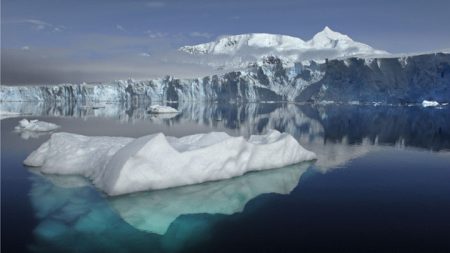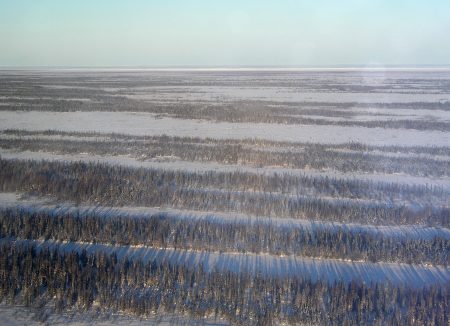September 17, 2017 – As ice sheets in Antarctica, Greenland and the Canadian Northern Archipelago melt, they create an uneven pattern of sea level rise around the world. Researchers refer to this as a fingerprint. In the latest research published on this subject in Geophysical Research Letters on September 9, 2017, Isabella Velicogna, a geophysicist at UC Irvine and her co-authors describe this fingerprint on a global scale.
What they report in their paper is, that polar ice sheets exert a gravitational pull on the water to which they are adjacent. That these slight pulls make sea levels higher at the intersection point where ice meets ocean. So as a glacier loses mass the pull weakens causing adjacent sea levels to fall. And as ice mass decreases, the land underneath it experiences isostatic rebound.

What is isostatic rebound?
It is the rise in elevation of continental land masses following melting of glaciers and ice sheets lying on top of them. Once the weight of the ice is gone, the land literally bobs back up. That rebound further lowers sea levels adjacent to the land where the ice mass melts. The combination of melt and rebound alters Earth’s gravitational field causing the extra volume of water to migrate far from its points of origin. For example, the researchers note that Antarctic ice melt correlates to a 52% faster rate of sea level rise off California and Florida than elsewhere on the planet.
Velicogna, the lead scientist of the paper, notes that lower latitudes exhibit the highest sea level rise because of gravitational field changes. The data that supports this comes from NASA’s GRACE satellites which measure gravitational changes on the Earth’s surface. Covering 12 years, from 2002 to 2014, scientists analyzed GRACE findings and then correlated them to other measurement sources including pressure stations on the ocean floor. The latter measure the mass of water above their locations and therefore give an accurate vertical height of the ocean surface.

What are the implications of this research?
Since sea level rise is variable across the planet it is important that scientists measure as many points as possible to understand the implications of further ice melts from Antarctic, Greenland and the Canadian Northern Archipelago. There should be a call for the widespread deployment of ocean floor pressure stations feeding continuous measurements so that we have a better picture of which coastlines will be most impacted by these gravitational shifts. For example, we know that the northern parts of North America and Siberia are still experiencing isostatic rebound from the last Ice Age, more than ten thousand years after the ice retreated. Geology and geological time move slowly.
Another phenomenon complicates issues further. Those northern areas of the hemisphere that rebound cause areas of the continent adjacent to them to be impacted in reverse. For example, the subsidence of The Chesapeake Bay area and Florida is in part because of continental rebound experienced to the north.
Global Thermal Expansion and Weather Phenomena
Back in August, I wrote about another paper appearing in Geophysical Research Letters that described sea level rise three times faster on the Eastern Seaboard of the United States than the global average. The paper’s authors argued that two phenomena, the North Atlantic Oscillation combined with an El Nino were the contributing factors to this accelerated rise.
Add to this thermal expansion, a phenomenon caused by density decreases in water when it is heated causing it to expand. Ocean water columns are showing increased warming throughout. This phenomenon is contributing to sea level rise, but to what extent, remains an unknown. represents an additional threat to coastlines, particularly during high tides and storm surges.
For cities like Miami and Miami Beach, the combination of all of these phenomena, glacial ice melt, gravitational shifts, isostatic rebound, confluences of weather phenomena, and thermal expansion, represent the reasons why there are increasingly frequent sunny-day flooding events in these communities.







